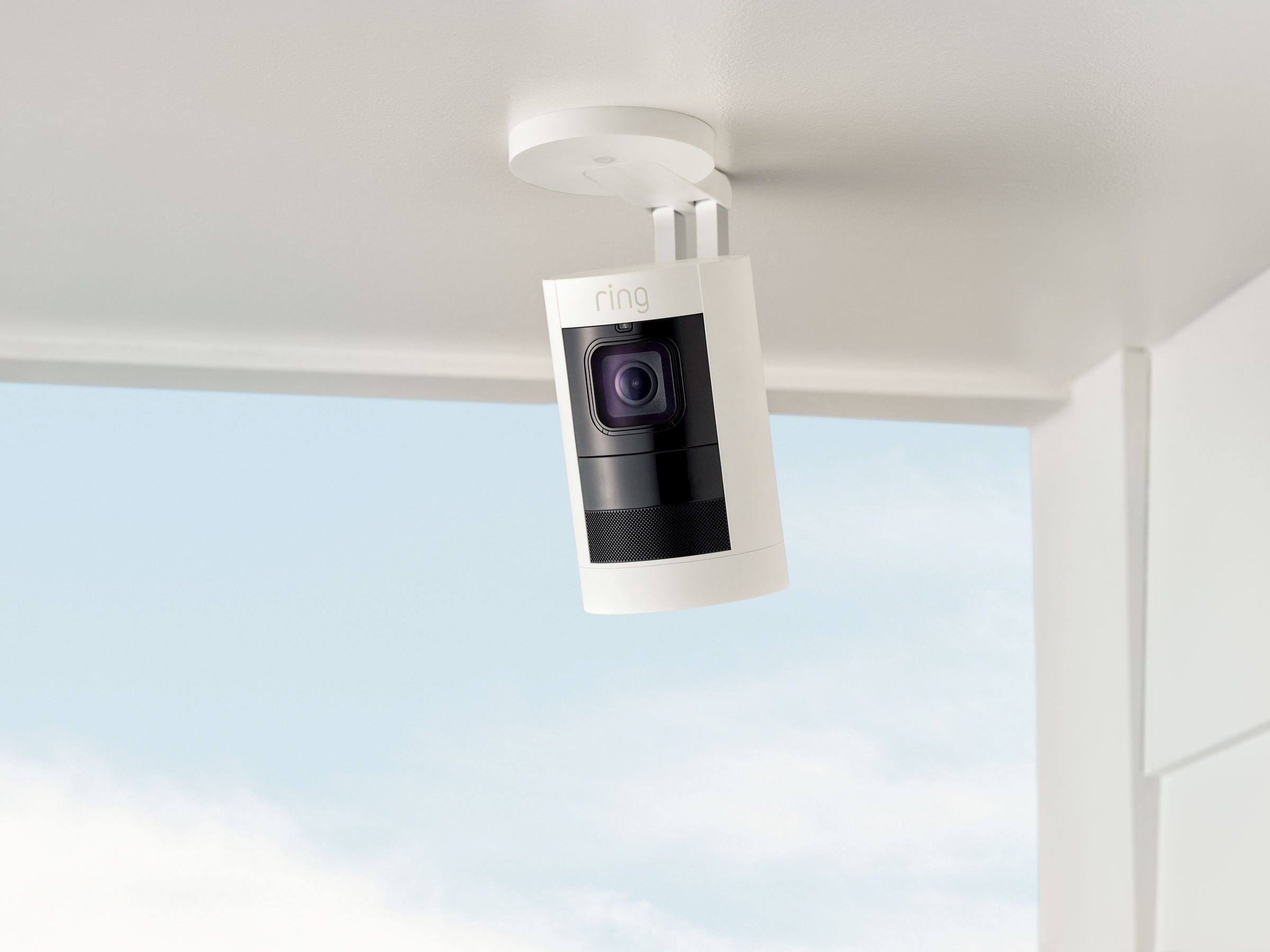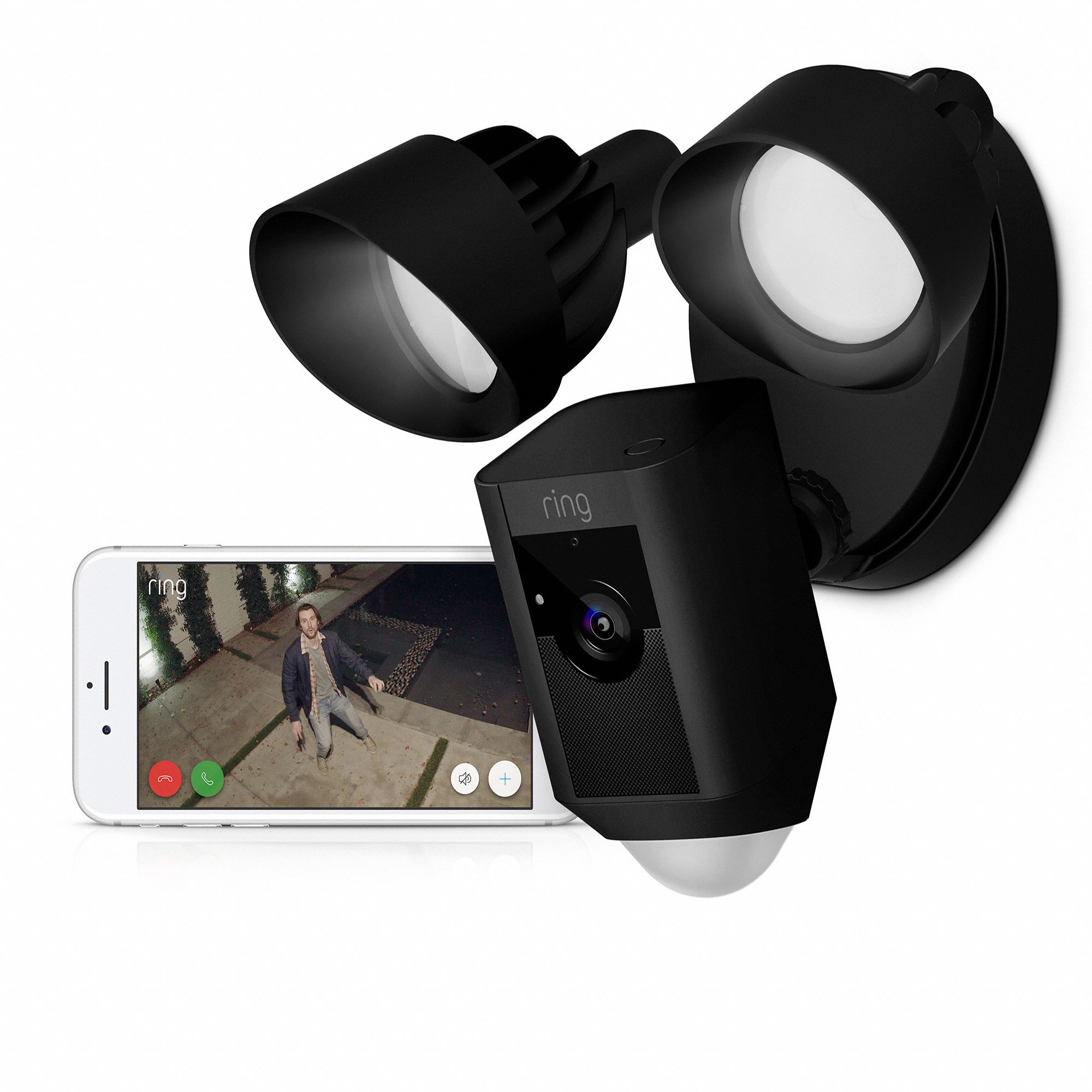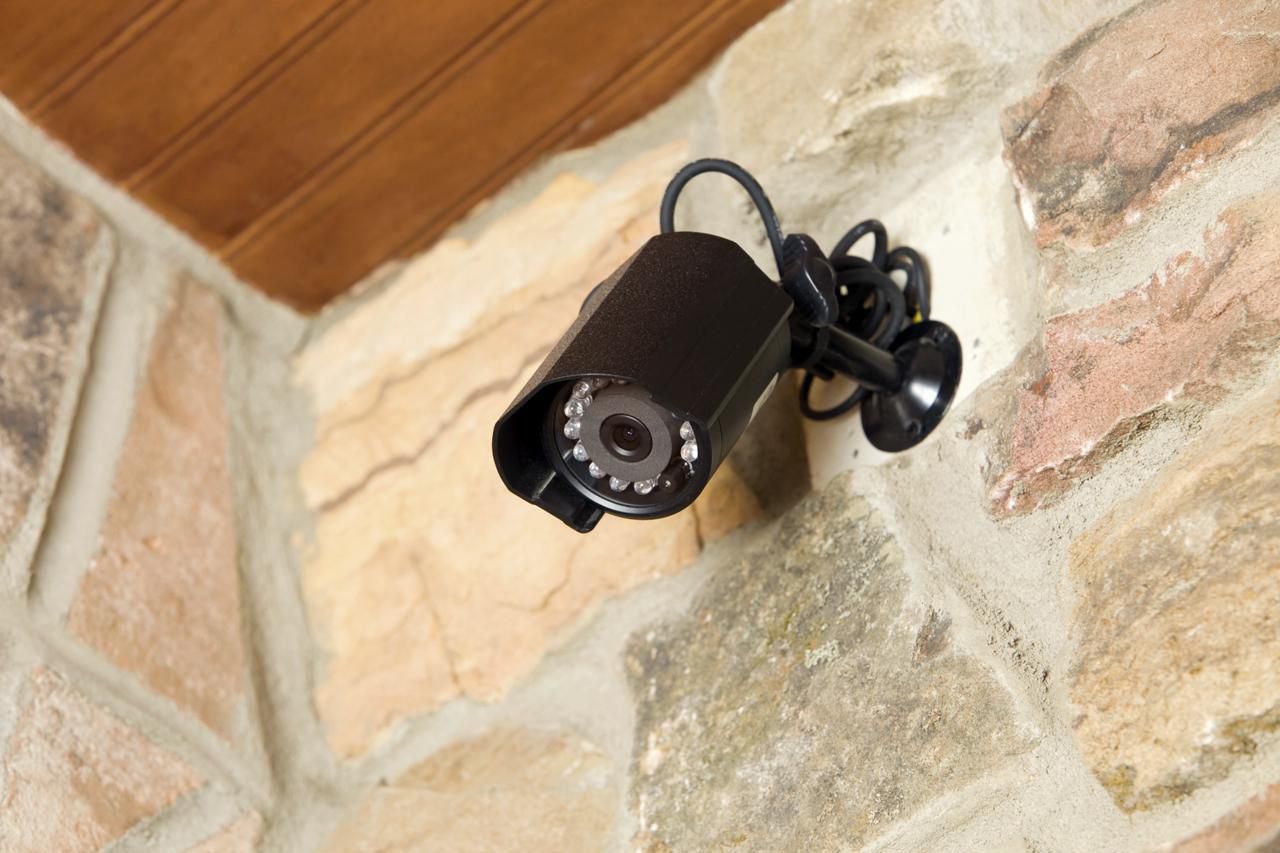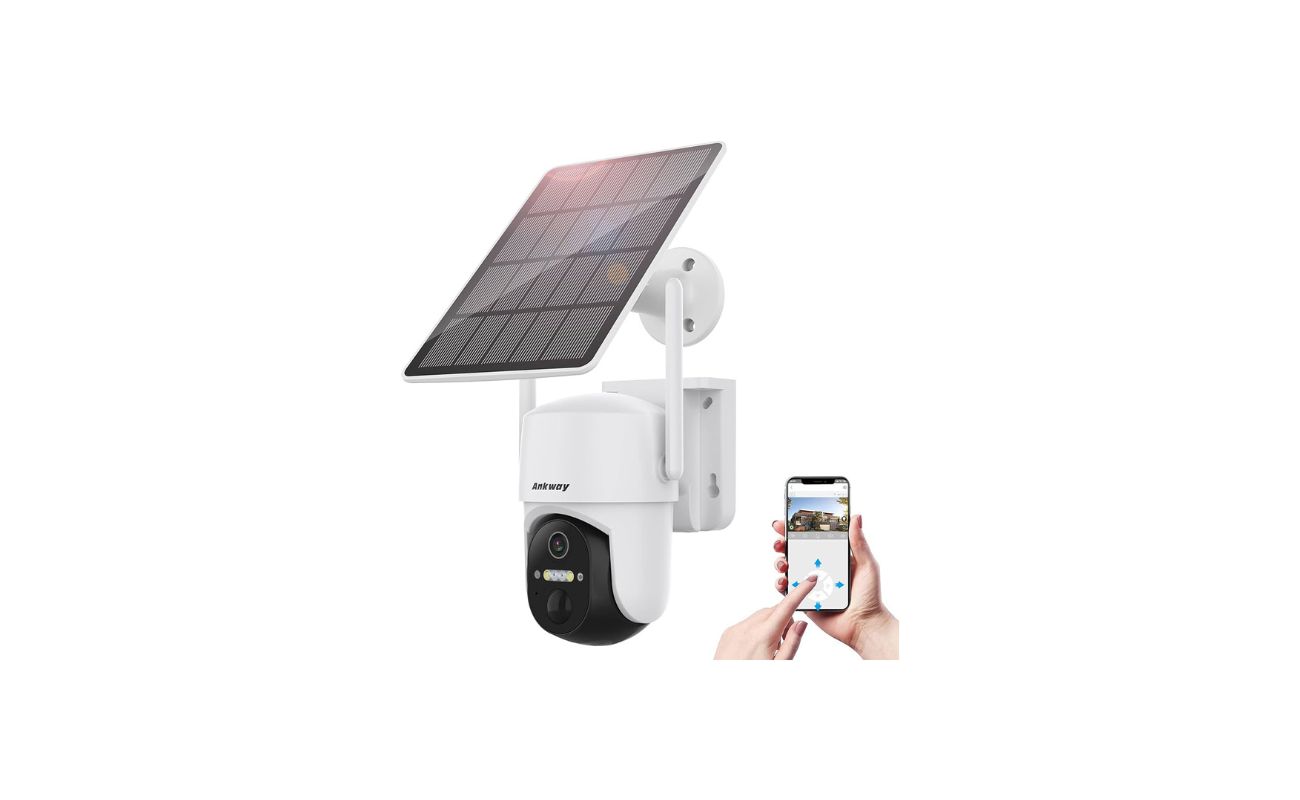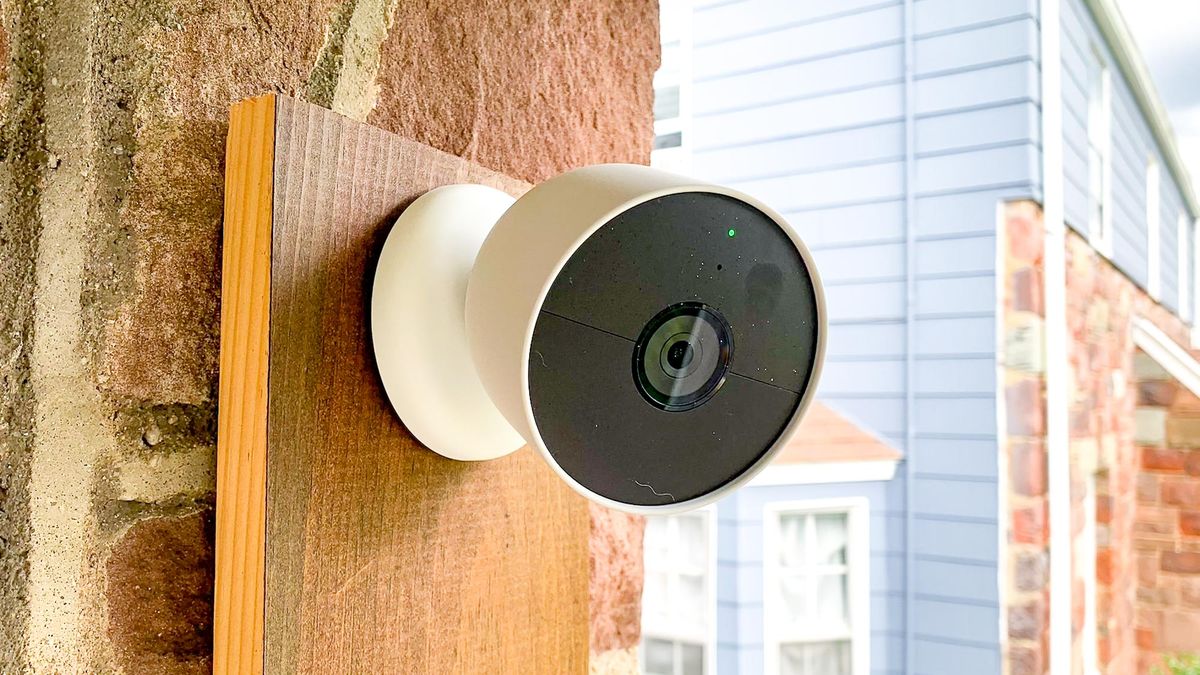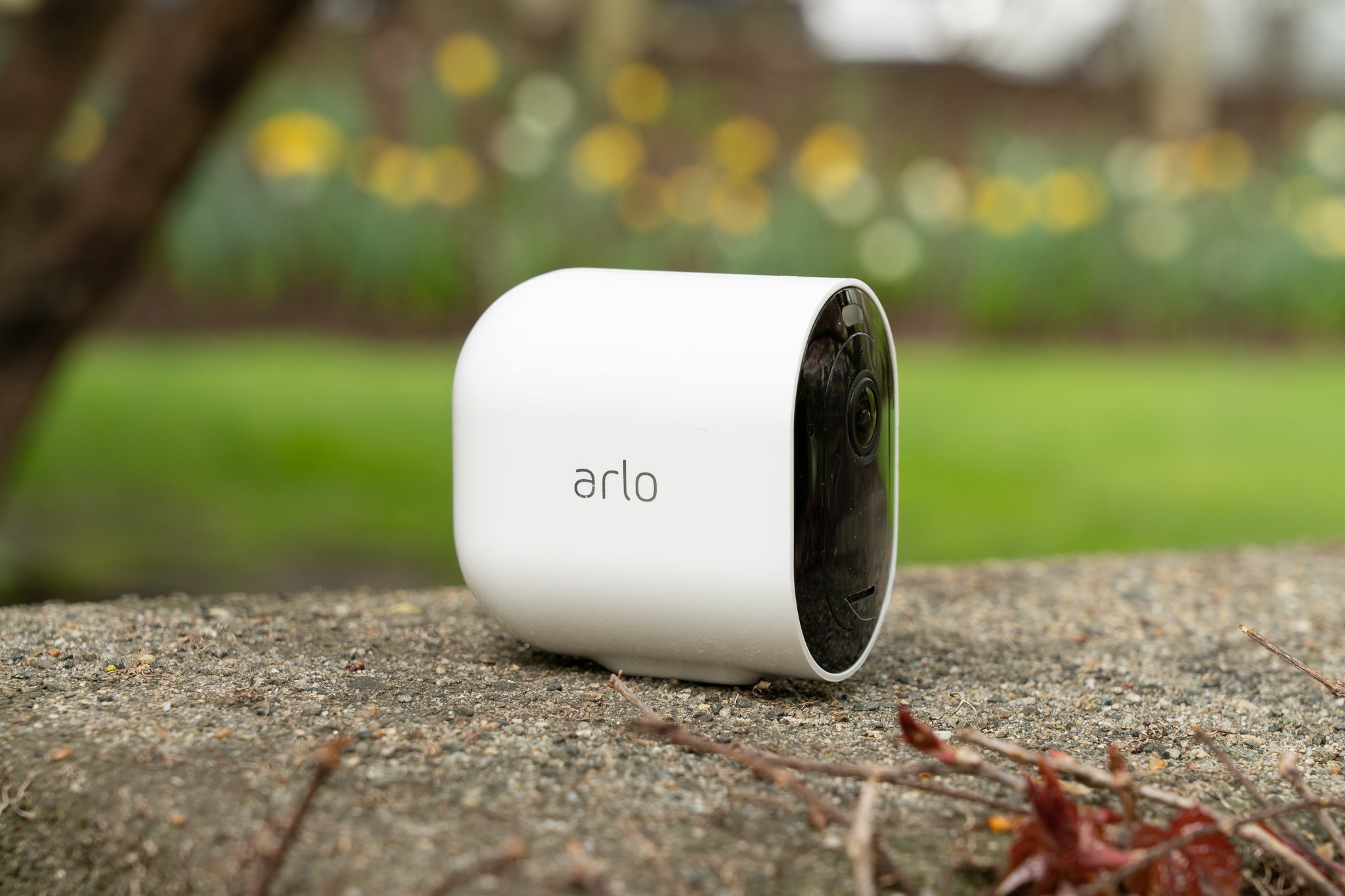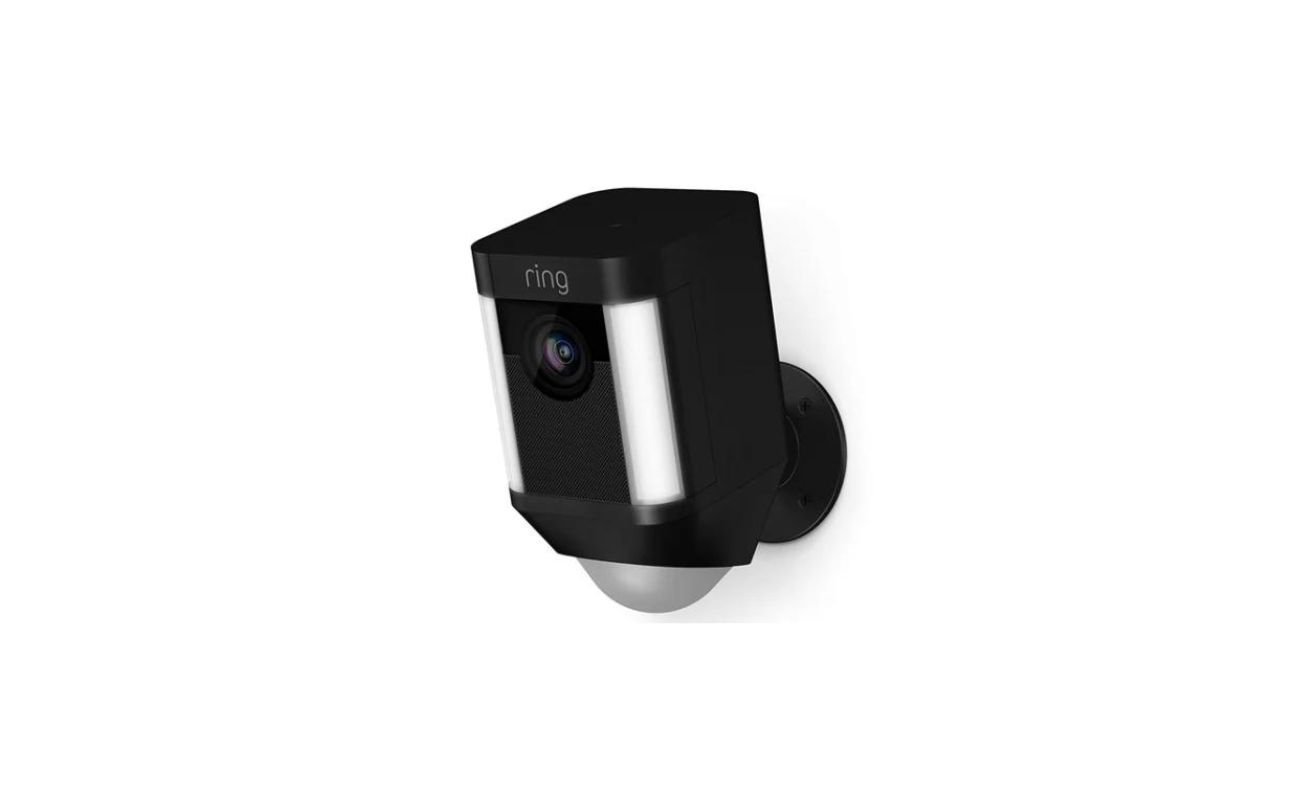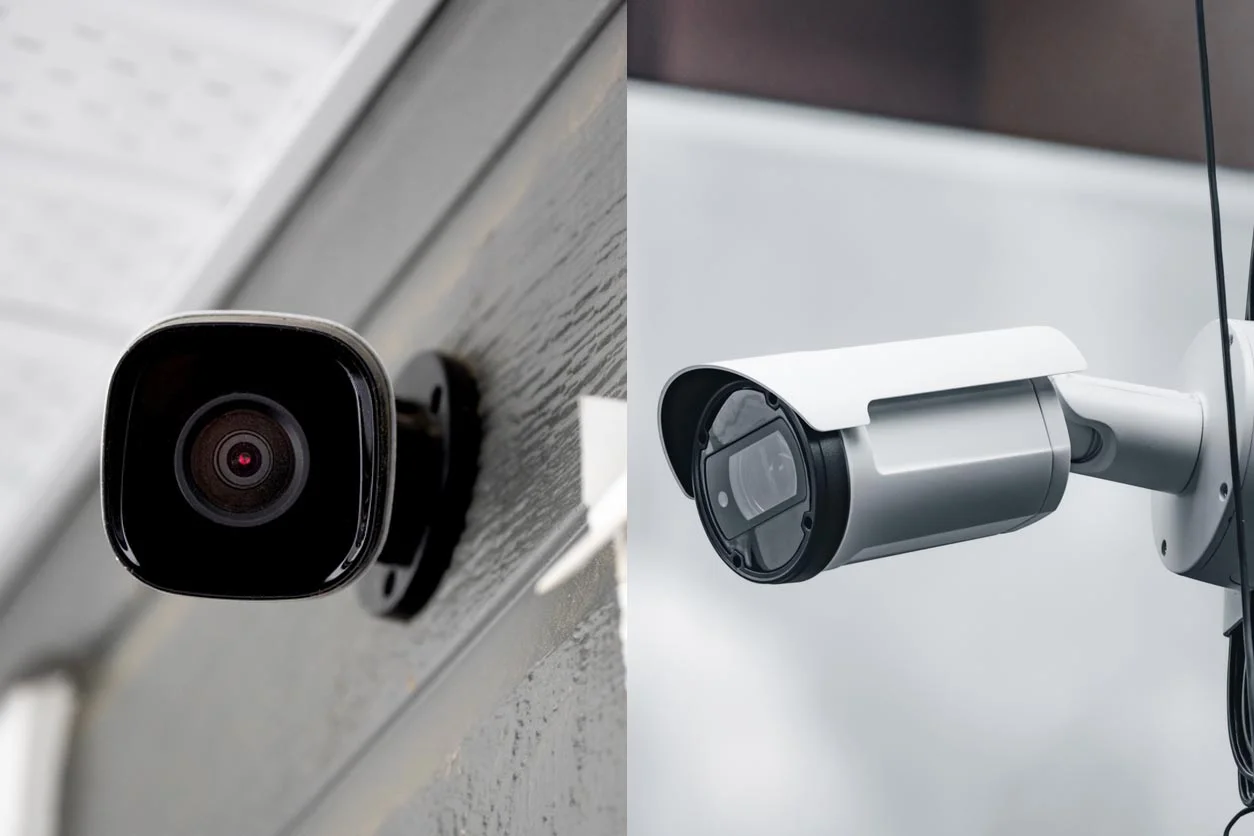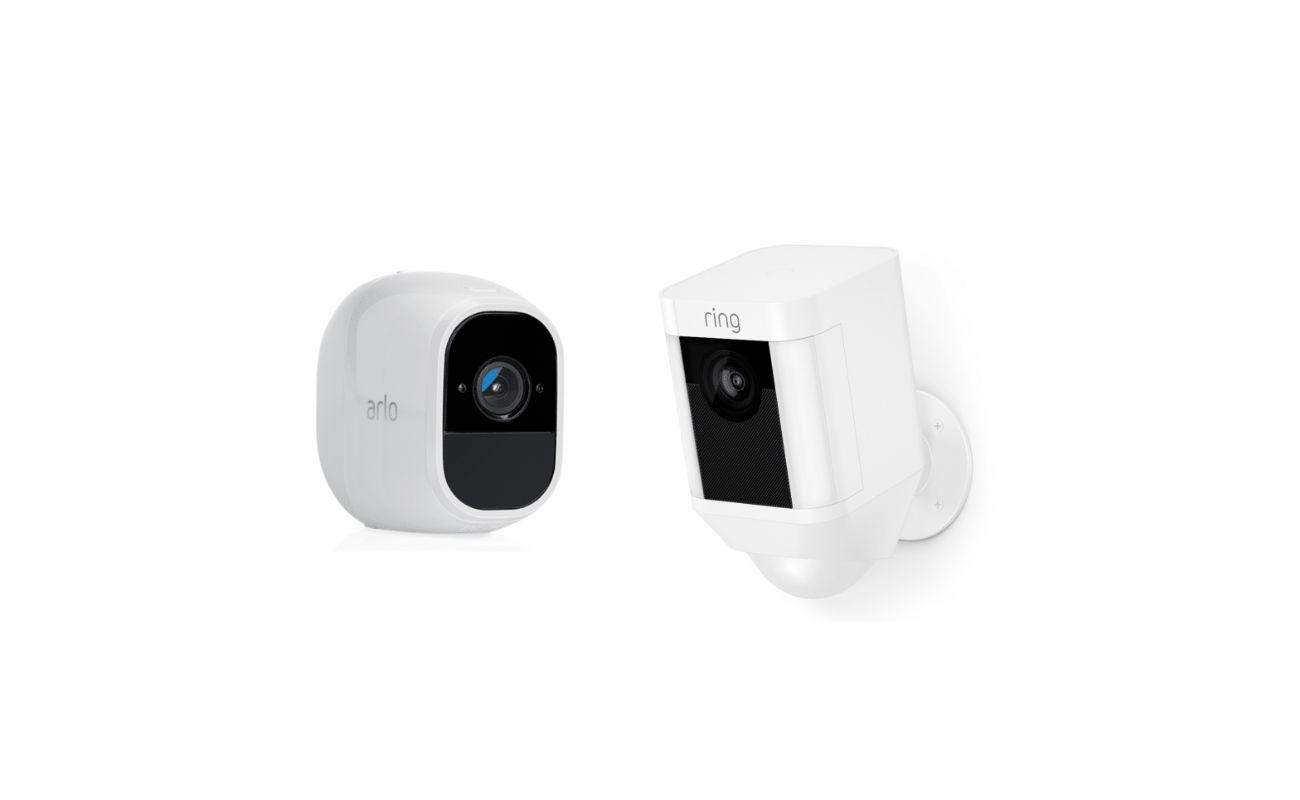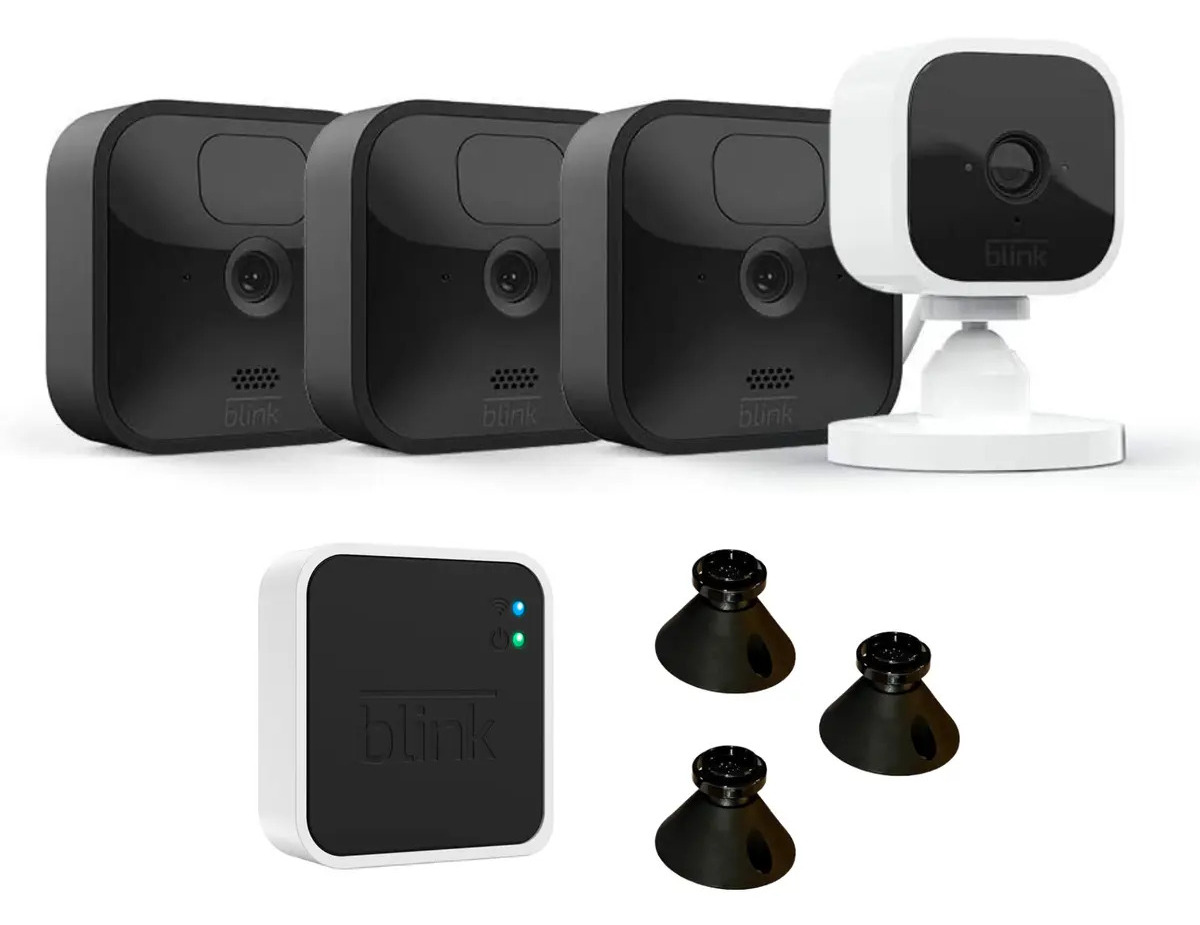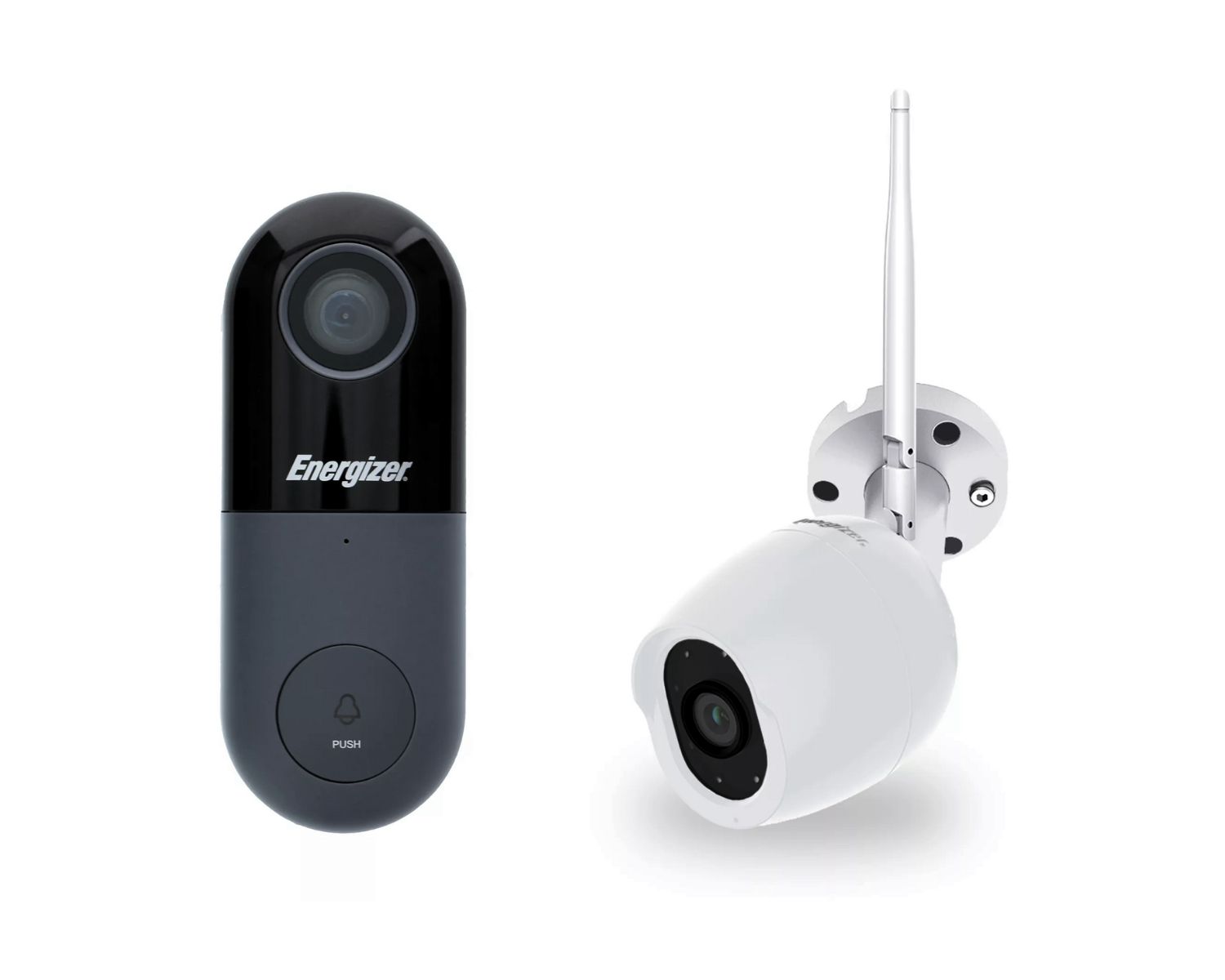Home>Home Security and Surveillance>Which Is The Best Wireless Outdoor Camera
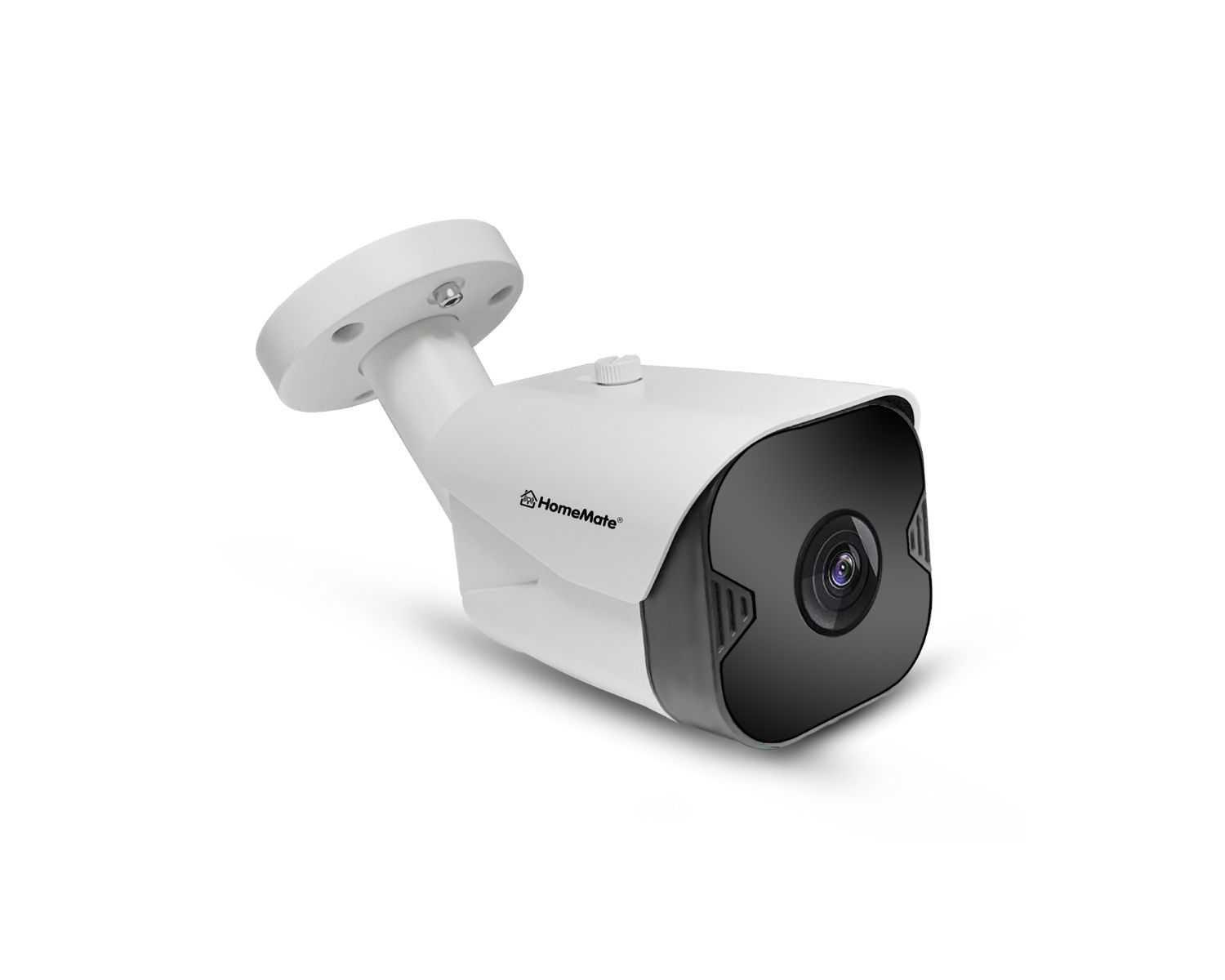

Home Security and Surveillance
Which Is The Best Wireless Outdoor Camera
Modified: March 6, 2024
Looking for the best wireless outdoor camera? Explore our top picks for home security and surveillance to keep your property safe and protected.
(Many of the links in this article redirect to a specific reviewed product. Your purchase of these products through affiliate links helps to generate commission for Storables.com, at no extra cost. Learn more)
Introduction
Welcome to the world of wireless outdoor cameras! With advancements in technology, home security and surveillance have become more accessible and convenient than ever before. Gone are the days of complex installations and messy wiring. Wireless outdoor cameras offer a flexible and hassle-free solution to monitor and protect your property.
Whether you’re a homeowner looking to keep an eye on your front yard, a business owner wanting to secure your premises, or simply someone who values peace of mind, a wireless outdoor camera is an essential tool in your security arsenal. But with so many options available, it can be overwhelming to choose the best one for your needs.
In this article, we will guide you through the factors to consider when selecting a wireless outdoor camera and provide a comparison of the top models in the market. We will also highlight key features to look for to ensure you make an informed decision. Additionally, we will discuss the pros and cons of wireless outdoor cameras, helping you weigh your options and find the perfect fit for your security needs.
Before we dive into the specifics, it’s important to understand the benefits of wireless outdoor cameras. They offer the flexibility to place the cameras wherever you need them without being limited by wiring constraints. This means you can easily install the cameras in strategic locations around your property to maximize coverage.
Wireless outdoor cameras are also highly convenient. Many models come with mobile apps that allow you to monitor your property remotely from your smartphone or tablet. This means you can check in on your home or business at any time, whether you’re at work, on vacation, or simply in another room.
Moreover, wireless outdoor cameras serve as a deterrent to potential intruders. The visible presence of cameras can deter criminals, keeping your property safe and secure. In the unfortunate event of a crime, the footage captured by the cameras can provide valuable evidence to help authorities catch the culprits and recover stolen items.
Now that we understand the benefits of wireless outdoor cameras, let’s delve into the factors you should consider when choosing the perfect camera for your needs.
Key Takeaways:
- Wireless outdoor cameras offer easy installation, remote monitoring, and weather resistance. They provide peace of mind by detecting motion, capturing clear footage at night, and offering expandability for comprehensive surveillance.
- Consider the pros and cons of wireless outdoor cameras, such as signal interference and power source limitations. Choose cameras with reliable connectivity and security measures to ensure effective surveillance and protection.
Factors to Consider in Choosing a Wireless Outdoor Camera
With a wide range of options available, it’s important to consider several factors when choosing a wireless outdoor camera. These factors will help ensure that the camera you choose meets your specific requirements and provides effective surveillance for your property. Here are some key factors to consider:
- Camera Resolution: One of the most important factors to consider is the camera’s resolution. Higher resolution cameras provide clearer and more detailed images, allowing you to easily identify faces and license plates. Look for cameras with at least 1080p resolution or higher for optimal image quality.
- Field of View: The field of view determines how much area the camera can cover. A wider field of view is preferable as it allows for greater coverage with fewer cameras. Look for cameras with a field of view of 100 degrees or more to ensure maximum coverage for your outdoor space.
- Weather Resistance: Since the camera will be placed outdoors, it must be able to withstand various weather conditions. Look for cameras with an IP65 or higher rating, indicating that they are dust-tight and water-resistant. This ensures that the camera can withstand rain, snow, and extreme temperatures.
- Night Vision: The ability to see in low light or complete darkness is crucial for outdoor cameras. Look for cameras with infrared (IR) LEDs that provide clear night vision up to a certain distance, allowing you to monitor your property 24/7.
- Two-Way Audio: Some wireless outdoor cameras come with built-in speakers and microphones, allowing you to communicate with whoever is near the camera. This can be useful for remote surveillance or for speaking with delivery personnel, visitors, or intruders.
- Motion Detection: Motion detection is an essential feature that alerts you when movement is detected in the camera’s field of view. Look for cameras with adjustable motion sensitivity and the ability to send push notifications or email alerts when activity is detected.
- Cloud Storage: Consider whether the camera offers cloud storage options for video footage. Cloud storage provides a secure and convenient way to store and access camera recordings remotely. Some cameras offer free cloud storage for a limited period, while others require a subscription.
- Power Source: Wireless outdoor cameras can be powered by batteries, solar panels, or connected to a power source. Consider the power source that best suits your needs and ensure that it provides sufficient battery life or consistent power supply.
- Mobile App: Check if the camera comes with a user-friendly mobile app that allows you to control and view the camera feed from your smartphone or tablet. The app should provide easy navigation, live streaming, and access to camera settings.
- Integration: If you have an existing home security system or smart home devices, consider whether the camera can integrate with them. Integration allows for seamless automation and synchronization between different security devices.
By considering these factors, you can narrow down your options and choose a wireless outdoor camera that meets your specific requirements and provides reliable and effective surveillance for your property. Now that we’ve explored the factors to consider, let’s compare some of the top wireless outdoor cameras available on the market.
Comparison of Top Wireless Outdoor Cameras
When it comes to wireless outdoor cameras, there are several top models to choose from. Each camera has its own unique features and capabilities. Here, we will compare three of the most popular wireless outdoor cameras, helping you make an informed decision:
1. Camera A
Camera A is a high-resolution wireless outdoor camera with a 180-degree field of view, allowing for comprehensive coverage of your outdoor space. It features weather resistance with an IP65 rating, ensuring durability in various weather conditions. This camera offers clear night vision up to 50 feet and has a built-in microphone and speaker for two-way audio communication. It also includes advanced motion detection technology with customizable sensitivity levels. Camera A supports cloud storage for convenient access to recorded footage and is compatible with a user-friendly mobile app for remote monitoring and control.
2. Camera B
Camera B is a versatile wireless outdoor camera that captures sharp 1080p resolution images. It has a 120-degree field of view, which is ideal for smaller outdoor areas. This camera is designed to withstand harsh weather conditions with its IP66 rating. It features infrared LEDs for reliable night vision and has a built-in microphone for audio monitoring. Camera B offers customizable motion detection settings and sends instant notifications to your smartphone or email when activity is detected. It supports both local storage via microSD card and cloud storage for easy access to recordings. Camera B can be easily integrated with other smart home devices and controlled through a user-friendly mobile app.
3. Camera C
Camera C is a wireless outdoor camera with exceptional video quality, boasting 4K resolution for crystal-clear images. It has a wide 150-degree field of view, providing extensive coverage of your outdoor area. This camera is designed to withstand extreme weather conditions with its IP67 rating. It features advanced night vision technology with a range of up to 100 feet, ensuring visibility even in complete darkness. Camera C includes two-way audio capabilities, allowing for real-time communication with visitors or potential intruders. It offers smart motion detection with person detection and facial recognition features. Camera C supports both local storage and cloud storage options, providing easy access to recorded footage. It can be controlled through a user-friendly mobile app and integrates with popular smart home platforms.
These cameras are just a few examples of the top wireless outdoor cameras available on the market. Each camera has its own strengths and features, so it’s important to assess your specific needs and compare the options to find the best fit for your home or business. Now that we’ve explored the comparison of top wireless outdoor cameras, let’s move on to the key features you should look for when selecting a wireless outdoor camera.
Camera A
Camera A is a top-of-the-line wireless outdoor camera that offers outstanding features and functionality. With its high-resolution capabilities and wide field of view, Camera A provides comprehensive surveillance coverage for your outdoor space.
One of the key features of Camera A is its impressive 180-degree field of view. This wide coverage ensures that you can monitor a larger area with a single camera, reducing the need for multiple cameras to cover your property. Whether you want to keep an eye on your front yard, driveway, or backyard, Camera A has you covered.
In addition to its field of view, Camera A also excels in video quality. With its high resolution, you can expect clear and detailed images, making it easier to identify faces, license plates, and other crucial details. This level of clarity can be essential in providing evidence in case of any security incidents.
Another noteworthy feature of Camera A is its weather resistance. With an IP65 rating, this camera is built to withstand various weather conditions. Whether it’s raining, snowing, or extremely hot outside, Camera A will continue to function optimally, ensuring reliable surveillance no matter the weather. This durability is crucial for outdoor cameras that are exposed to the elements year-round.
Camera A is also equipped with advanced night vision capabilities. With infrared LEDs, it can capture clear footage even in complete darkness. This allows for 24/7 surveillance without compromising on image quality. Whether it’s late at night or during the early morning hours, Camera A ensures that you can still monitor your property with confidence.
Additionally, Camera A features two-way audio, allowing for real-time communication with anyone near the camera. This can be particularly useful for remote monitoring or for speaking with delivery personnel, visitors, or potential intruders. The built-in microphone and speaker provide clear and crisp audio quality, enhancing the overall surveillance experience.
Camera A also offers advanced motion detection technology. With customizable sensitivity levels, you can adjust the camera’s sensitivity to ensure accurate detection of movement. When activity is detected, Camera A can send instant push notifications or email alerts to your smartphone or other connected devices, keeping you informed and allowing for prompt action if necessary.
Additionally, Camera A supports cloud storage, providing a secure and convenient way to store and access your recorded footage. With the ability to access your footage remotely through a user-friendly mobile app, you can always keep an eye on your property no matter where you are. The app also allows for easy control of camera settings and live streaming.
In summary, Camera A offers a multitude of features that make it a top choice when it comes to wireless outdoor cameras. From its wide field of view and high-resolution video quality to its weather resistance and advanced motion detection, Camera A ensures reliable and effective surveillance for your outdoor space.
Camera B
Camera B is a versatile and reliable wireless outdoor camera that offers a range of features to enhance your home security. With its sharp image quality and user-friendly design, Camera B is a popular choice for those looking to monitor their outdoor premises effectively.
One of the standout features of Camera B is its 1080p resolution, which delivers clear and detailed images. This high-resolution capability ensures that you can capture important details, such as faces or license plates, with ease. Whether it’s daytime or nighttime, you can expect sharp and vivid footage from Camera B.
Camera B offers a 120-degree field of view, providing a wide coverage area for your outdoor space. This is especially beneficial for smaller properties or specific areas that require focused surveillance, such as a front porch or backyard patio. With Camera B, you can ensure that no blind spots are left unmonitored.
Designed to withstand harsh weather conditions, Camera B has an IP66 rating, making it resistant to dust and water. Whether it’s heavy rain, snowfall, or extreme temperatures, you can rely on Camera B to continue functioning flawlessly, ensuring round-the-clock surveillance protection for your property.
Equipped with infrared LEDs, Camera B offers reliable night vision capabilities. It can capture clear footage even in low-light conditions, allowing you to monitor your property during the night. With Camera B, you’ll have peace of mind knowing that your security is not compromised, regardless of the time of day.
Camera B features motion detection technology that enables you to customize the camera’s sensitivity levels. This ensures accurate detection of any movement within its field of view. When motion is detected, Camera B can send instant notifications to your smartphone or email, keeping you informed and allowing you to take immediate action if necessary.
For storage options, Camera B offers both local and cloud storage capabilities. You can insert a microSD card into the camera for local storage, ensuring that you have access to the recorded footage directly from the camera itself. In addition, Camera B supports cloud storage, allowing for convenient remote access to the recorded videos. This ensures that your footage is secure and easily accessible whenever you need it.
Camera B is designed to be user-friendly, with a mobile app that enables you to control and monitor the camera from your smartphone or tablet. The app provides live streaming, playback of recorded videos, and the ability to adjust camera settings. With easy access to your camera’s feed and settings, you can stay connected and in control of your home security at all times.
In summary, Camera B offers impressive features, such as high-resolution video quality, versatile coverage, weather resistance, night vision capabilities, customizable motion detection, and convenient storage options. With its user-friendly design, Camera B is a reliable choice for anyone seeking effective wireless outdoor surveillance.
Camera C
Camera C takes wireless outdoor surveillance to the next level with its exceptional video quality and advanced features. With its 4K resolution, wide field of view, and comprehensive night vision capabilities, Camera C ensures unparalleled security for your outdoor space.
One of the standout features of Camera C is its 4K resolution, which delivers incredibly sharp and detailed video footage. This high-resolution capability allows you to capture even the smallest details, making it easier to identify faces, objects, and other important elements. With Camera C, you can rest assured that you’ll have crystal-clear images that provide a clear view of any security incidents.
Camera C offers a wide 150-degree field of view, providing extensive coverage for your outdoor area. This broad field of view allows you to monitor a larger area with fewer cameras, making it an ideal choice for those who want comprehensive surveillance coverage. Whether you want to monitor your front yard, backyard, or a parking lot, Camera C ensures that no area goes unnoticed.
Designed to withstand extreme weather conditions, Camera C has an IP67 rating, making it both dust-tight and water-resistant. This durability ensures that the camera can operate flawlessly even in the harshest environments, whether it’s heavy rain, snow, or high temperatures. With Camera C, you can have peace of mind knowing that your surveillance system is built to last.
Camera C is equipped with advanced night vision technology, allowing for clear video footage even in complete darkness. This is made possible with infrared LEDs that can illuminate the area up to 100 feet away from the camera. With Camera C’s exceptional night vision capabilities, you can be confident in monitoring your property around the clock.
In addition to its video capabilities, Camera C includes two-way audio functionality. With a built-in speaker and microphone, you can communicate with anyone near the camera in real-time. This feature can be helpful for remote surveillance, allowing you to interact with delivery personnel, visitors, or even deter potential intruders. The clear and crisp audio from Camera C ensures effective communication in any situation.
Camera C incorporates smart motion detection technology, including person detection and facial recognition features. This advanced technology reduces false alarms by specifically detecting human activity and recognizing familiar faces. The customizable motion detection settings allow you to fine-tune the camera’s sensitivity to meet your specific needs, ensuring accurate detection and timely notifications when any movement is detected.
For storage options, Camera C supports both local storage and cloud storage. You can use a microSD card to store the recorded footage directly within the camera or choose cloud storage for convenient access to your videos from anywhere. Camera C ensures that your recorded footage is safe and accessible, whether it’s for reviewing incidents or sharing important videos with authorities if needed.
To control and monitor Camera C, a user-friendly mobile app is provided. The app allows for easy navigation, live streaming of the camera feed, and adjustment of camera settings. Camera C is also compatible with popular smart home platforms, making integration with your existing smart home devices seamless.
In summary, Camera C offers exceptional video quality, wide coverage, weather resistance, advanced night vision capabilities, customizable motion detection, and flexible storage options. With its advanced features and reliability, Camera C is an excellent choice for those seeking top-of-the-line wireless outdoor surveillance.
Key Features to Look for in a Wireless Outdoor Camera
When choosing a wireless outdoor camera, it’s important to consider several key features that will ensure its effectiveness and suitability for your security needs. Here are some essential features to look for:
- Weather Resistance: An outdoor camera should be able to withstand various weather conditions. Look for cameras with a high weather resistance rating, such as IP65 or higher, to ensure their durability in rain, snow, and extreme temperatures.
- Motion Detection: Motion detection is a crucial feature that allows the camera to detect any movement within its field of view. Look for cameras with adjustable motion sensitivity levels and the ability to send real-time alerts to your smartphone or email when motion is detected.
- Night Vision Capabilities: Since outdoor surveillance often requires monitoring in low-light or darkness, night vision capabilities are essential. Look for cameras with infrared (IR) LEDs that can provide clear and detailed footage even in complete darkness.
- Video Quality: High-resolution video quality is essential for capturing clear and detailed images. Look for cameras that offer at least 1080p resolution or higher to ensure sharp video footage, making it easier to identify faces, objects, and license plates.
- Connectivity Options: Ensure that the camera offers reliable wireless connectivity, such as Wi-Fi, to connect to your home network. This enables you to access the camera’s feed and control settings remotely through a user-friendly mobile app.
- Two-Way Audio: Some cameras come with built-in speakers and microphones for two-way audio communication. This feature allows you to listen and talk to anyone near the camera, providing an extra layer of interaction and security.
- Storage Options: Consider the camera’s storage options for recorded footage. Look for cameras that offer both local storage, such as a microSD card slot, and cloud storage options. This ensures that your footage is easily accessible and securely stored.
- Mobile App: A user-friendly mobile app allows you to control and monitor the camera remotely from your smartphone or tablet. Look for cameras that offer intuitive apps with features like live streaming, playback, and customizable settings.
- Integration with Smart Home Devices: If you have other smart home devices, consider cameras that can integrate with your existing ecosystem. This allows for seamless automation and synchronization between different devices for a more comprehensive and convenient security system.
- Manufacturer Reputation: Lastly, consider the reputation of the camera manufacturer. Look for established brands with a track record of producing reliable and high-quality security products. Read customer reviews and ratings to ensure the camera meets your expectations.
By considering these key features, you can select a wireless outdoor camera that meets your specific security requirements. Each feature plays a crucial role in ensuring the camera’s effectiveness and performance in monitoring and protecting your property.
Remember to assess your needs and prioritize the features that align with your specific security goals. Whether it’s weather resistance, night vision, video quality, or storage options, finding the right combination of features will help you establish a robust and reliable outdoor surveillance system.
Weather Resistance
Weather resistance is a crucial feature to consider when choosing a wireless outdoor camera. Since outdoor cameras are exposed to the elements year-round, they need to be able to withstand various weather conditions to ensure optimal performance and longevity.
When it comes to weather resistance, look for cameras with a high IP (Ingress Protection) rating. The IP rating consists of two numbers, with the first digit representing the camera’s protection against solid objects like dust and the second digit representing its protection against liquids like water.
For outdoor cameras, a rating of IP65 or higher is recommended. An IP65-rated camera is completely dust-tight and protected against low-pressure water jets from any direction. This means it can handle rain, snow, wind, and other outdoor elements without being compromised.
By choosing a weather-resistant camera, you can be confident that it will continue to function optimally in even the harshest weather conditions. Whether it’s heavy rain, high humidity, extreme temperatures, or strong winds, a weather-resistant camera will provide reliable surveillance for your outdoor spaces.
Not only does weather resistance protect the internal components of the camera from moisture and dust, but it also ensures that the camera’s external housing remains intact and secure. A well-built, weather-resistant camera will have a durable housing that can withstand physical impact, UV exposure, and temperature fluctuations without cracking or deteriorating.
Keep in mind that weather resistance alone does not guarantee the longevity of the camera. Regular maintenance and cleaning are still important to ensure the camera’s optimal performance over time. Periodically check the camera’s housing and connections for signs of wear or damage. Clean the camera lens to ensure clear footage. It’s also important to follow the manufacturer’s recommendations for operating temperature ranges to prevent any potential damage.
In summary, weather resistance is a fundamental feature to consider when selecting a wireless outdoor camera. Look for cameras with a high IP rating, such as IP65 or higher, to ensure protection against dust and water. This will ensure that your camera can withstand various weather conditions and continue to provide reliable surveillance for your outdoor areas, giving you peace of mind knowing that your property is well-protected regardless of the weather.
Motion Detection
Motion detection is a vital feature to consider when choosing a wireless outdoor camera. It allows the camera to detect any movement within its field of view and notify you in real-time, ensuring that you stay informed of any activity or potential security threats.
The effectiveness of motion detection depends on two key factors: accuracy and customizability. Look for cameras that offer adjustable motion sensitivity levels, allowing you to fine-tune the camera’s detection capabilities to suit your specific needs.
Adjustable motion sensitivity ensures that the camera doesn’t trigger false alarms due to common occurrences like tree branches swaying in the wind or pets moving about. By customizing the sensitivity levels, you can eliminate unnecessary notifications and focus on events that truly require your attention.
Some advanced wireless outdoor cameras also offer intelligent motion detection features, such as person detection or facial recognition. These features make it possible to distinguish between different types of motion, helping you differentiate between a potential intruder and a harmless passerby or a stray animal. Intelligent motion detection reduces false alarms and ensures that you receive notifications only when relevant activity is detected.
When motion is detected, the camera should be able to promptly notify you. Look for cameras that offer multiple notification options, such as push notifications to your smartphone or email alerts. These instant notifications allow you to take immediate action or assess the situation and decide whether further attention is required.
Some wireless outdoor cameras also offer the option to set specific zones for motion detection. This allows you to define certain areas within the camera’s field of view that you want to monitor more closely. For example, you can set the camera to focus on your front door or driveway, while ignoring motion in less critical areas. Zone-based motion detection adds an extra layer of customization and precision to your surveillance system.
It’s important to note that the effectiveness of motion detection can be affected by other factors, such as camera placement and the camera’s field of view. Ensure that the camera is positioned to cover the areas you want to monitor and that there are no obstacles or blind spots that could hinder its detection capabilities.
In summary, motion detection is a crucial feature that enhances the effectiveness of a wireless outdoor camera. Look for cameras that offer adjustable motion sensitivity levels, intelligent motion detection features, instant notifications, and the ability to set specific detection zones. By selecting a camera with reliable and customizable motion detection capabilities, you can ensure that your outdoor surveillance system is responsive, efficient, and capable of capturing any potential security threats.
Night Vision Capabilities
When choosing a wireless outdoor camera, it is important to consider the night vision capabilities it offers. Night vision allows the camera to capture clear and detailed footage even in low-light or complete darkness, ensuring round-the-clock surveillance of your outdoor spaces.
Wireless outdoor cameras use various technologies to achieve night vision. The most common technology is infrared (IR) illumination, which involves the use of infrared LED lights to illuminate the surroundings. The IR lights are invisible to the human eye but provide the necessary illumination for the camera to capture images, even in pitch-black conditions.
When evaluating night vision capabilities, consider the camera’s range and clarity in low-light conditions. Look for cameras that offer a significant night vision range, typically measured in feet, to ensure wide coverage of your outdoor areas. A range of 50 feet or more is recommended for effective surveillance.
Additionally, pay attention to the clarity and image quality provided by the camera’s night vision feature. The camera should be able to capture clear and sharp images, allowing you to easily identify objects, people, and any potential security threats. Consider cameras that offer high-definition night vision or a sufficient number of IR LEDs to ensure superior image quality.
Some advanced wireless outdoor cameras come with additional features to enhance their night vision capabilities. Look for cameras that offer features like Smart IR, which automatically adjusts the intensity of the IR illumination based on the proximity of objects. This helps to avoid overexposure or underexposure, ensuring optimal image quality at different distances.
In addition to range and clarity, consider whether the camera offers settings to customize its night vision capabilities. Look for cameras that provide adjustable settings to control the sensitivity of the night vision feature. This allows you to fine-tune the camera’s performance based on the specific lighting conditions in your outdoor environment.
Furthermore, consider the camera’s ability to seamlessly switch between day and night modes. The camera should have an automatic infrared cut-off filter that allows it to transition between modes based on the ambient light. This ensures that the camera captures clear footage during the day while maintaining optimal night vision performance when it gets dark.
Remember that the effectiveness of night vision can also be influenced by the placement and angle of the camera. Ensure that the camera is positioned in a way that avoids obstructions and provides the best possible coverage of the area you want to monitor at night.
In summary, comprehensive night vision capabilities are essential for a wireless outdoor camera. Look for cameras with a significant night vision range, clarity in low-light conditions, adjustable settings, and features like Smart IR. By selecting a camera with effective night vision capabilities, you can have peace of mind knowing that your property is under constant surveillance, even in the darkest hours of the night.
When looking for the best wireless outdoor camera, consider features like weather resistance, night vision, motion detection, and video quality. Look for reliable brands with good customer reviews.
Video Quality
Video quality is a critical factor to consider when selecting a wireless outdoor camera. The quality of the footage captured by the camera plays a crucial role in accurately monitoring and identifying potential security threats or incidents on your property.
When evaluating video quality, resolution is the most important aspect to consider. Look for cameras that offer high-definition (HD) or full high-definition (FHD) resolution, typically defined as 720p or 1080p respectively. Higher resolutions, such as 2K or 4K, are also available for even sharper and more detailed images.
Higher resolution cameras provide clear and crisp footage, allowing you to easily identify faces, license plates, or other important details. This becomes particularly important when it comes to gathering evidence or identifying potential intruders in the event of a security incident.
In addition to resolution, consider other factors that contribute to video quality, such as frame rate and compression technology. Look for cameras that offer a higher frame rate, typically 30 frames per second (fps) or higher, to ensure smooth and fluid video playback without any noticeable lag or choppiness.
Compression technology is another important consideration. Cameras that use advanced video compression formats, such as H.265 or H.264, can effectively reduce the size of video files without compromising on quality. This is particularly important for conserving storage space, especially if you choose to store the footage locally on a microSD card or use cloud storage options.
When it comes to wireless outdoor cameras, consider cameras with wide dynamic range (WDR) capabilities. WDR technology helps to balance the exposure in scenes with both bright and dark areas. This ensures that details are not lost in areas of high contrast, such as when monitoring an outdoor space with a bright sunlit area and shaded areas.
It’s important to note that video quality can also be influenced by external factors such as lighting conditions and camera placement. While high-resolution cameras can provide excellent clarity during the daytime, consider cameras with advanced low-light capabilities or infrared (IR) illumination for clearer footage in challenging lighting conditions or at night.
Lastly, consider the encoding and streaming capabilities of the camera. Look for cameras that support efficient encoding formats, such as H.265, for optimal bandwidth utilization and streaming performance. This ensures smooth live streaming and remote access to the camera’s feed through mobile apps or web browsers.
In summary, video quality is a crucial consideration when choosing a wireless outdoor camera. Look for cameras with high-resolution capabilities, support for advanced compression technologies, wide dynamic range (WDR) functionality, and efficient encoding and streaming capabilities. By selecting a camera with superior video quality, you can ensure clear, detailed, and reliable footage to enhance your outdoor surveillance and security efforts.
Connectivity Options
Connectivity options are an important factor to consider when selecting a wireless outdoor camera. The ability to connect the camera to your home network and access the camera’s feed and settings remotely is crucial for convenient monitoring and control.
Most wireless outdoor cameras use Wi-Fi connectivity to connect to your home network. When evaluating connectivity options, ensure that the camera supports a reliable and stable Wi-Fi connection. Look for cameras that support the latest Wi-Fi standards, such as 802.11ac or 802.11n, for faster and more reliable data transmission.
Consider the range and coverage of the camera’s Wi-Fi connection. If you have a large area to cover, make sure the camera has a strong and extensive Wi-Fi range. This ensures that the camera can maintain a stable connection even when placed further away from your home’s Wi-Fi router.
Furthermore, look for cameras that offer dual-band Wi-Fi capabilities. Dual-band cameras can operate on both 2.4GHz and 5GHz frequency bands. This provides flexibility in selecting the optimal frequency based on your wireless network setup and helps to reduce interference from other devices in your home.
Another important connectivity feature to consider is the availability of a user-friendly mobile app. A mobile app allows you to control and monitor the camera from your smartphone or tablet. Look for cameras that offer intuitive and well-designed mobile apps that provide easy navigation, live streaming, and access to camera settings.
In addition to the mobile app, assess the compatibility of the camera with other third-party smart home platforms or voice assistants. Integration with platforms like Amazon Alexa or Google Assistant enables you to control the camera through voice commands or integrate it into your existing smart home ecosystem.
Consider whether the camera offers web-based access as well. This allows you to access the camera’s feed and settings through a web browser on your computer or laptop. Web-based access can be particularly useful if you prefer a larger screen or need to access the camera’s settings from a device without the mobile app installed.
Also, check if the camera offers other connectivity options such as Ethernet ports. Ethernet ports provide a wired connection option for more stable and reliable data transmission. This can be beneficial if you have a wired network setup or if you want to ensure a consistent connection for the camera.
Lastly, consider the security features related to connectivity. Look for cameras that support encryption protocols, such as WPA2-AES, to ensure secure communication between the camera and your network. This helps to protect your data and prevent unauthorized access to your camera’s feed and settings.
In summary, connectivity options play a crucial role in the usability and convenience of a wireless outdoor camera. Look for cameras that offer reliable Wi-Fi connectivity, dual-band capabilities, a user-friendly mobile app, compatibility with smart home platforms, web-based access, and other connectivity options like Ethernet ports. By selecting a camera with flexible and reliable connectivity options, you can efficiently monitor and control your outdoor surveillance system from anywhere at any time.
Pros and Cons of Wireless Outdoor Cameras
Wireless outdoor cameras offer numerous advantages and some drawbacks compared to their wired counterparts. Understanding the pros and cons of wireless outdoor cameras will help you make an informed decision when selecting a surveillance system for your property.
Pros:
1. Ease of Installation: Wireless outdoor cameras are relatively easy to install compared to wired cameras. There is no need to run cables or drill holes through walls, making the installation process quick and hassle-free. This also allows for flexible camera placement and easy relocation if needed.
2. Flexibility: Wireless outdoor cameras offer flexibility in terms of camera placement. You can easily install them in strategic locations around your property without being restricted by wiring limitations. This flexibility enables you to maximize coverage and monitor different areas without the need for multiple cameras.
3. Remote Monitoring: Many wireless outdoor cameras come with mobile apps that allow for remote monitoring and control. You can access the camera’s feed, receive notifications, and adjust settings from your smartphone or tablet, providing peace of mind whether you are at home, work, or on the go.
4. Expandability: Wireless outdoor camera systems can typically accommodate multiple cameras, allowing you to expand your surveillance coverage as needed. This scalability makes it easy to add more cameras to your system as your security requirements evolve.
5. Weather Resistance: Wireless outdoor cameras are designed to withstand various weather conditions. They are often weatherproof and resistant to dust, rain, and extreme temperatures, ensuring reliable performance even in harsh environments.
Read more: Which Camera Is Best For Outdoor Photography
Cons:
1. Signal Interference: Wireless outdoor cameras rely on Wi-Fi signals for connectivity. Interference from other devices or obstructions in the signal path, such as walls or trees, can potentially affect the camera’s connection and stability. It is important to ensure a strong and reliable Wi-Fi signal in the camera’s location.
2. Limited Range: Wireless outdoor cameras have a limited range compared to wired cameras. The distance between the camera and the Wi-Fi router can affect the quality of the connection. It is essential to consider the camera’s range and the placement of the Wi-Fi router to ensure a stable and reliable connection.
3. Power Source: Wireless outdoor cameras require a power source, either through batteries or a wired connection. Battery-powered cameras offer flexibility in terms of placement, but the batteries need to be regularly monitored and replaced. Cameras with a wired power source require access to an electrical outlet, limiting their placement options.
4. Bandwidth Usage: Streaming video footage from wireless outdoor cameras consumes bandwidth on your home network. The number of cameras and the quality of the video can impact your overall network performance, especially if you have multiple devices using your network simultaneously. Consider the impact on your internet speed and bandwidth usage when choosing wireless outdoor cameras.
5. Potential Security Risks: As with any network-connected device, wireless outdoor cameras can be vulnerable to hacking and cyber threats. It is important to choose cameras from reputable manufacturers that prioritize security and regularly update their camera firmware to address any potential vulnerabilities.
Considering these pros and cons will help you make an informed decision when selecting wireless outdoor cameras. Assess your specific needs and priorities to determine if the advantages outweigh the disadvantages in your particular situation. By understanding these factors, you can choose the right wireless outdoor camera system to enhance the security and surveillance of your property.
Conclusion
Wireless outdoor cameras provide a convenient and effective solution for home security and surveillance. Their ease of installation, flexibility, and remote monitoring capabilities make them an appealing choice for protecting your property. By considering key factors such as weather resistance, motion detection, night vision capabilities, video quality, and connectivity options, you can choose a wireless outdoor camera that meets your specific needs and ensures reliable surveillance.
The weather resistance of wireless outdoor cameras allows them to withstand various weather conditions, ensuring their durability and effectiveness in any climate. The motion detection feature detects movement within the camera’s field of view and notifies you in real-time, keeping you informed of any potential security threats. Night vision capabilities enable the camera to capture clear footage in low-light or complete darkness, ensuring around-the-clock surveillance.
Video quality is an important consideration, as higher resolution cameras provide clearer and more detailed images, enhancing the ability to identify important details. Connectivity options such as Wi-Fi, mobile apps, and integration with smart home platforms allow for convenient and remote monitoring and control of the cameras. Additionally, understanding the pros and cons of wireless outdoor cameras helps in making a well-informed decision when choosing a surveillance system.
In conclusion, wireless outdoor cameras offer a range of benefits including easy installation, flexibility, remote monitoring, expandability, and weather resistance. While they may have some limitations, such as potential signal interference or limited range, by selecting cameras with reliable connectivity and taking precautions to address potential security risks, you can mitigate these drawbacks.
Ultimately, the choice of wireless outdoor cameras depends on your specific security requirements, budget, and personal preferences. With the right selection, wireless outdoor cameras can provide you with peace of mind, knowing that your property is under constant surveillance and protected from potential intruders or security incidents.
Frequently Asked Questions about Which Is The Best Wireless Outdoor Camera
Was this page helpful?
At Storables.com, we guarantee accurate and reliable information. Our content, validated by Expert Board Contributors, is crafted following stringent Editorial Policies. We're committed to providing you with well-researched, expert-backed insights for all your informational needs.
